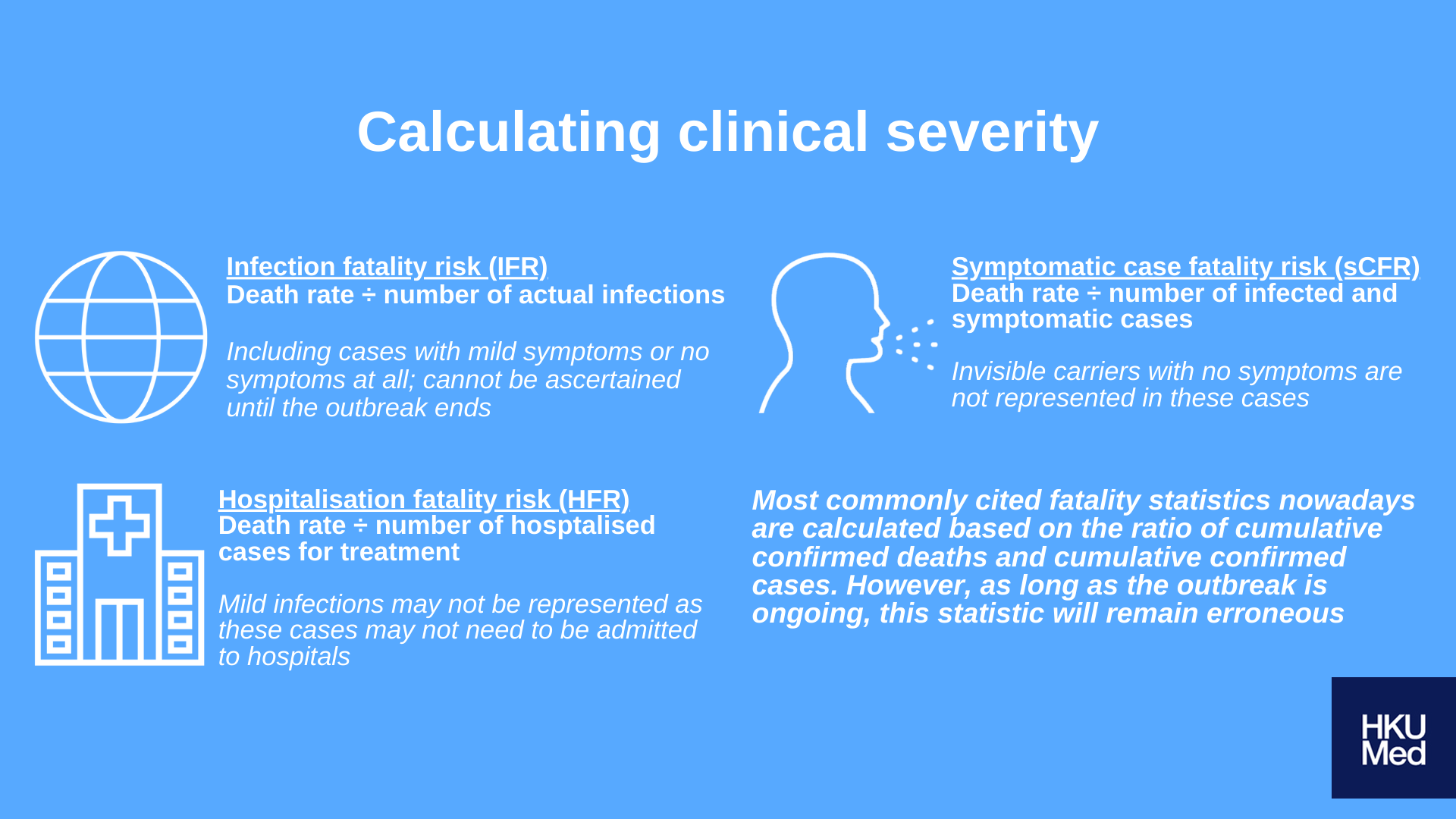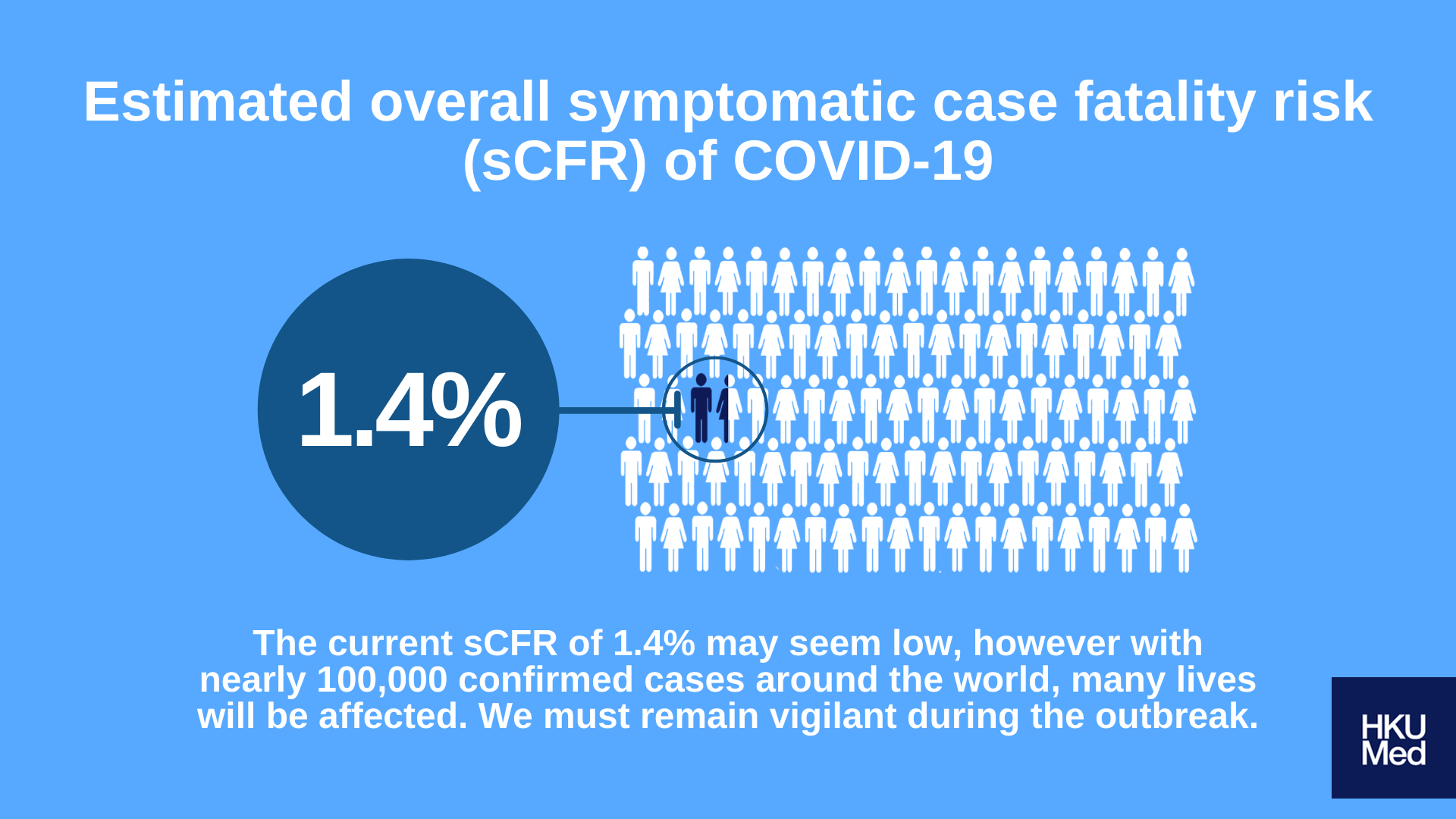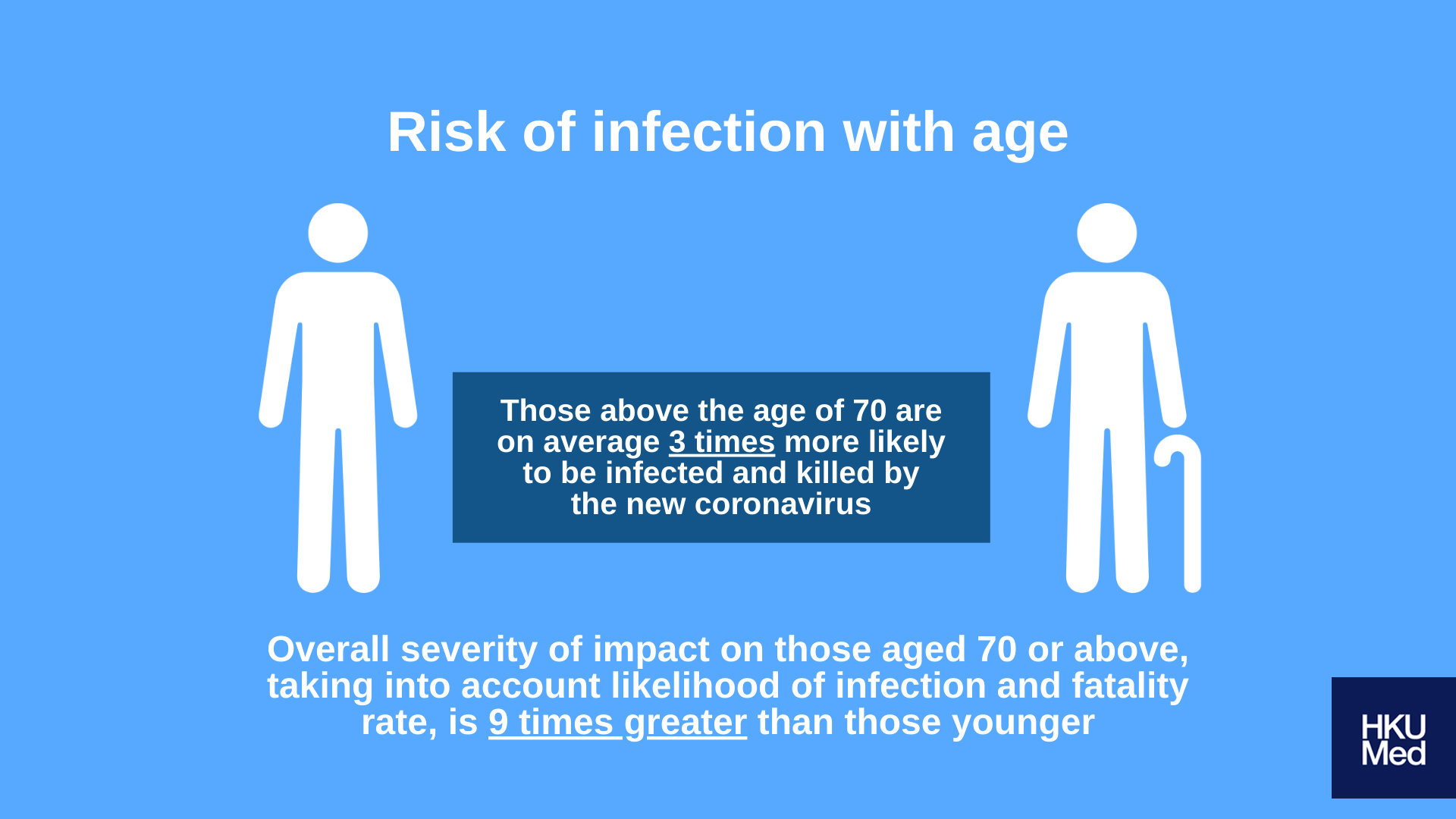Understanding Fatality Rate of COVID-19 – How Is It Calculated?
Health Article and healthographics by HKUMed
Numerous countries around the world are now seeing local outbreaks of COVID-19, and in some cases within communities as well. Following the latest estimated fatality rate of 1.4% as announced by HKUMed WHO Collaborating Centre for Infectious Disease Epidemiology and Control today at a press conference, many are curious to know how this statistic was obtained, and reasons for its discrepancy with previously published statistics from other outlets.
In view of these questions, our research team from the School of Public Health has provided some clarifications.
Q1. How is fatality rate calculated? Are there different ways of calculation that may result in discrepancies?

We must first consider three distinct definitions of fatality risk:
- Infection fatality risk (IFR): Death rate ÷ number of actual infections
- Symptomatic case fatality risk (sCFR): Death rate ÷ number of infected and symptomatic cases
- Hospitalisation fatality risk (HFR): Death rate ÷ number of hosptalised cases for treatment
These three definitions differ in the denominational factors i.e. number of actual infections, infected and symptomatic cases, and hospitalized cases respectively. Such differences may result in discrepancies between calculations and actual real-life contexts.
Q2. A fatality rate of 1.4% seems very low. Does that mean we may resume our regular daily routines?

Current statistics are calculated based on the number of confirmed cases with symptoms; despite the seemingly low fatality rate of 1.4%, current number of confirmed cases are nearing 100,000 globally, with possibly many more asymptomatic cases. Countless lives will be affected because of this outbreak, and as such requires a high level of caution still.
Q3. Is age a factor that affects likelihood of infection?

As a community, additional care and support must be given to the elderly; this can be achieved by ensuring sufficient supply of healthcare resources to them. We must also enforce health precautions on their behalf, and spare no efforts in minimising possibilities of an outbreak in elderly homes or other spaces where elderly populations are likely to gather.
For more information on the research, click here



